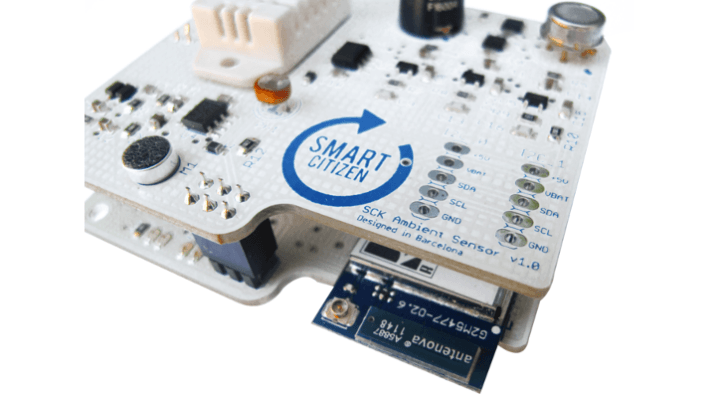Two Sides of the Smart City
September 18, 2015
on
on

Energy efficient, sustainable and empowered citizens, those are the promises of the smart city. But what about ubiquitous data collection and black box technology in the public space? Filmmaker Sara Blom and researcher Dorien Zandbergen documented the ambition of Amsterdam to become a smart city.
The clean, efficient city: sensor-enhanced parking spaces beam their status updates to a central server. Instead of frantically driving around hunting for a parking spot, drivers receive availability alerts for spaces in their vicinity.
On the face of it there seems little reason to object to such a scenario, smart parking saves precious time and reduces exhaust fumes. But then questions arise like how much data about the driver is being collected, who owns the data and who is allowed to access it. Soon, the bright promise of the smart city is overcast with doubt about vanishing privacy.
The discussion about smart cities is a complex and, for now, mostly theoretical. Blom and Zandbergen bring these abstract issues closer to home by examining different layers of one smart city project. The documentary Smart City: In Search of the Smart Citizen premiered last Thursday in Pakhuis de Zwijger in Amsterdam.
(Full disclosure: Dorien is a good friend and I am a board member of the Gr1p foundation, the platform where the documentary is hosted.)
Empowered citizens
The documentary follows the developments around the Smart Citizen Kit, a device with multiple sensors to measure noise, temperature and air pollution. A hundred Amsterdammers are invited to install the kit around their homes and take measurements. The idea is the research tool will get people more involved in their immediate environment which could motivate them to participate more in local politics and policy making.
How easy is it to be a smart citizen? Some of the participants wrestle getting the kit to work, spending hours searching for a MAC address without really knowing what that is. “I think many people get frustrated when technology doesn’t enable them to do what they want, but instead the technology itself demands a lot of attention”, says Douwe Schmidt one of the more tech-savvy participants who got his kit to work in under three hours. “It’s a general problem of technology, because it was meant to make things easier but we spend more time than ever focusing our attention on devices.”
Actionable data
The kit measures the two toxic gases CO and NO2. The ability to measure air pollution is an important part of the project. People want to know if pollution levels around their home within EU regulation. The hundred node sensor network can provide more fine-grained measuring results than the few measuring stations the municipality has put in place. The sensors are cheap as opposed to those of the city which costs tens of thousands of euros per unit.
The quality of the sensors are called into question but that is not the most important objection the film provides. With time these sensors will get better. A more important issue is raised by Irene Lake, an unemployed former security guard who’s enrolled in a basic computer skills course to improve her chances on the job market. She asks what she should do with the information if she would find the air is too polluted. “I can’t just pack up my things and move to somewhere where the air is clean”, she said. Her solution? Let the municipality measure air quality because it has the means to do something about it.
Techno-pessimism
As the story unfolds the film touches upon a range of issues. Will there be privacy in the city of the future? Is there a place for digital illiterates? In fact, aren’t we all digital illiterates surrounded by increasingly opaque technology?
Blom and Zandbergen’s film is very critical of the emergent smart city. Perhaps too critical.
The smart city is a fresh battle ground for techno-optimists and techno-pessimists to go the next round. This story leans too much to the pessimist side for my taste. In its justifiable attempt to call attention to the darker sides of the smart city it glosses over its other potential. The film would have been more balanced if it had more extensively explored the opinions of those who do believe in and aim for the bright side of the smart city.
But the attempt to visualize the abstract issues involving smart cities to make them more concrete has definitely succeeded.
Read full article
Hide full article



Discussion (0 comments)